T.Saslow
Periodic Thinker
- Joined
- Jun 12, 2013
- Messages
- 479
A few months back, a buddy of mine asked me to strip the ugly maroon lacquer off his Katana's Shirasaya. I was pleased when I found that the Saya was a fairly nice wood of unknown species and a bit of figuring at the top. Unfortunately, the Tsuka was some ugly lookin' wood, similar in hardness and grain pattern, to White Oak and had many worm holes and voids filled in with some form of Wood filler. In all honesty, this was uuuggly and we both (me and the owner) agreed it should be replaced. This decision ended in a bad way, and a good way. Good, because, despite some highly noticeable blemishes, the Tsuka came out beautifully. Bad, because I never want to make one again xD
Here she is fellas-
The main part of the handle was Tiger maple (not book matched) with some nice figuring to it. There was a small void about 1" long that I filled with Super glue and sanded down to 600 grit (along with the rest of the Shirasaya). The two sides were glued together with Tite bond 3 wood glue. The bolster is Gaboon Ebony, apx. 1/4" thick, that is bolstered by a thin (1/32" or so) piece of brass. The brass was epoxied both to the maple, and the Ebony using G-Flex Epoxy.
Some photos-
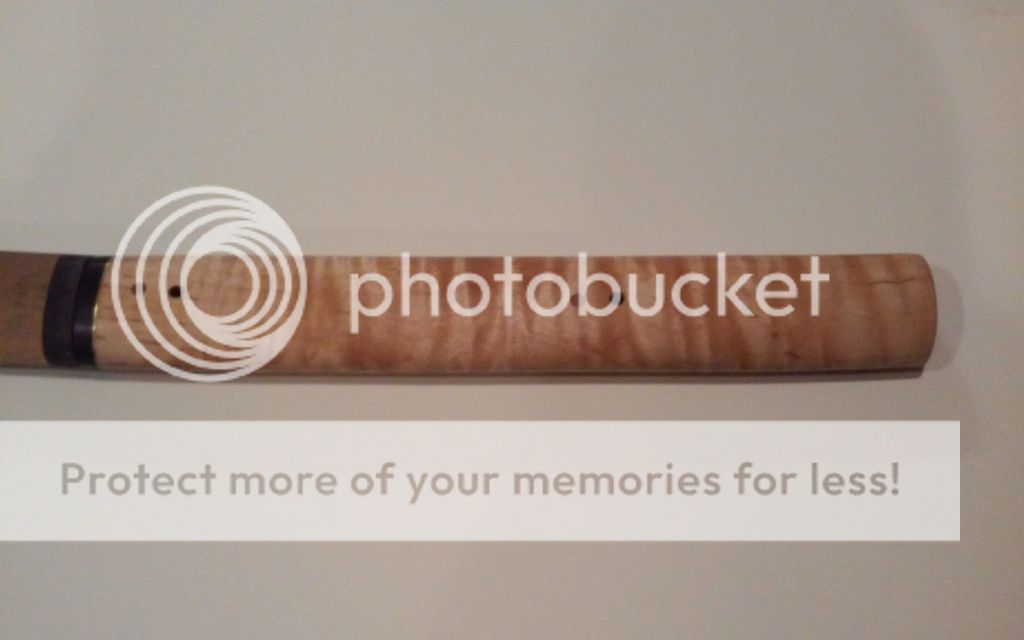
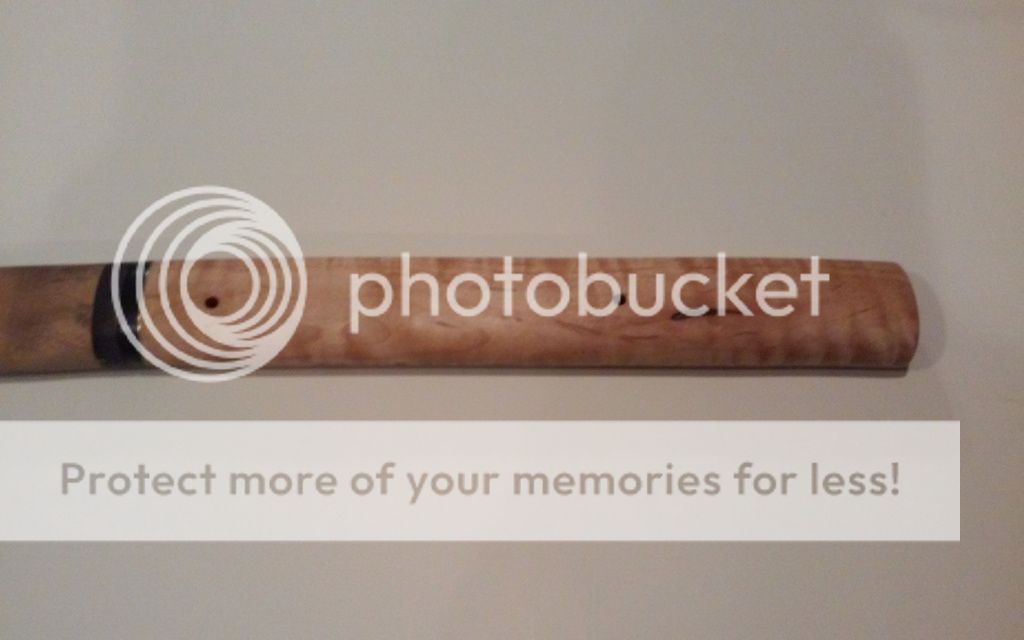
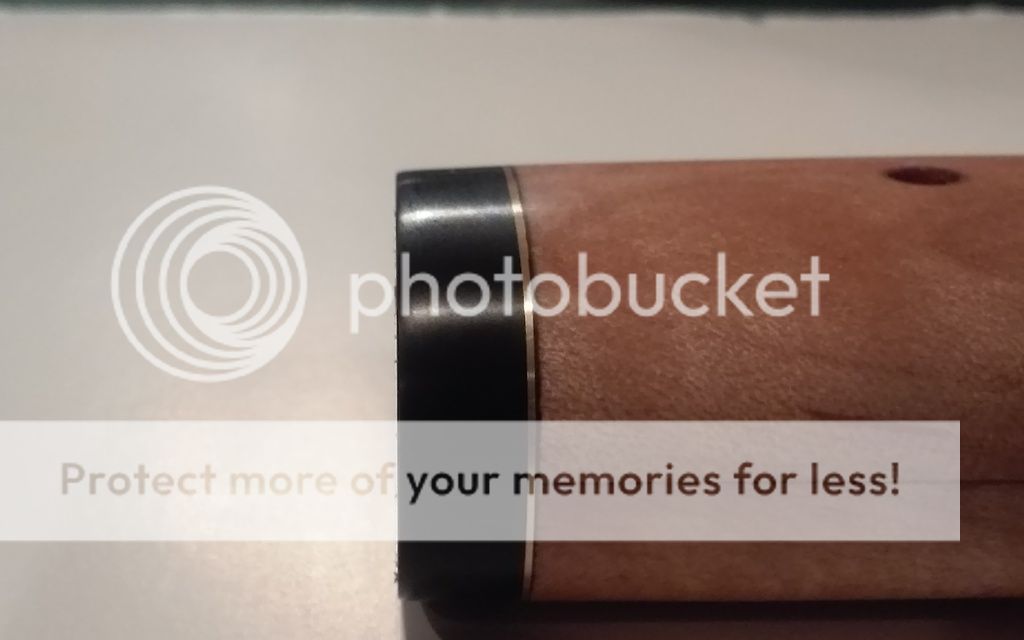
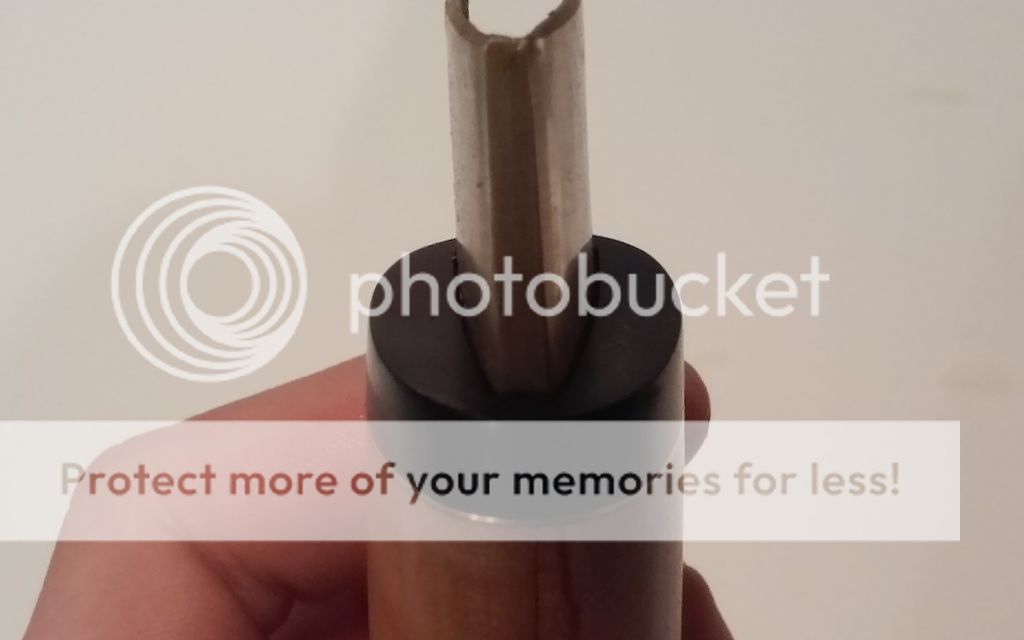
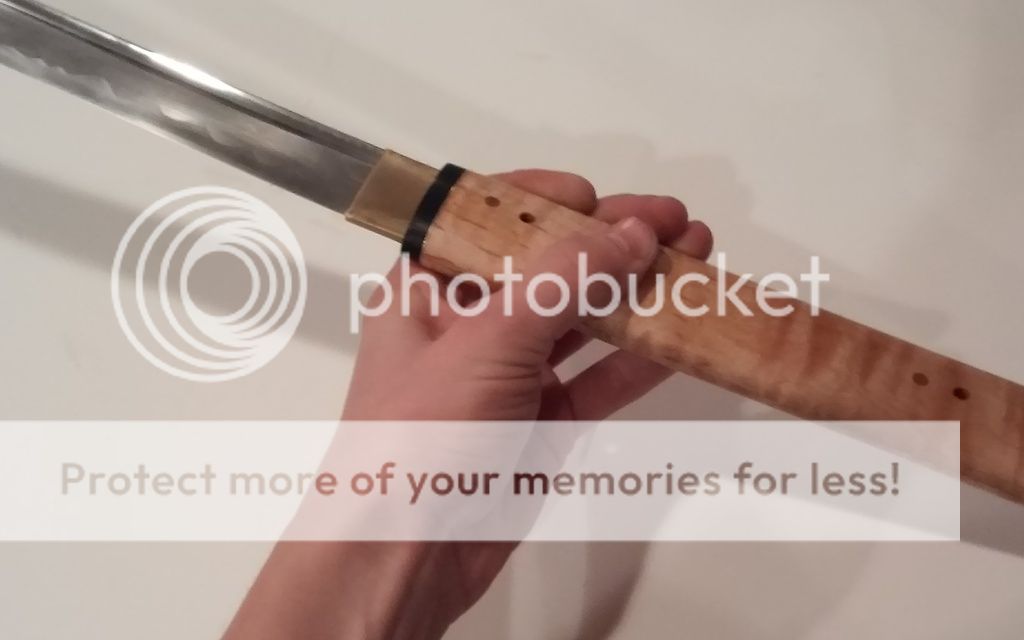
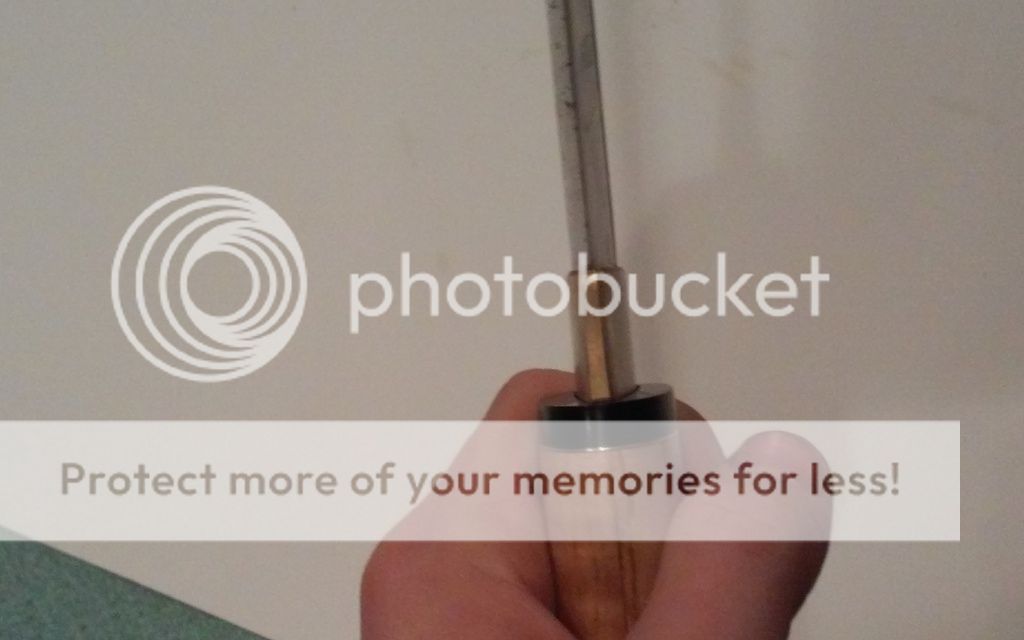
Critiques welcome, I know I made some mistakes (the blatant mis-drilling of two holes ) so I don't think a comment could be as devastating as that was!My terminology may be incorrect as well so sorry in advance
) so I don't think a comment could be as devastating as that was!My terminology may be incorrect as well so sorry in advance 
FYI- I talked to the customer about the two mis-drilled holes and he said to just fill them with plugs and not bother with re-making the Tsuka... contrary to what i suggested.
Sorry for the bad pictures, I don't have a nice camera and the only camera I do have that takes decent photos is on my free tablet that came with my moms cell phone
 Someday... SOMEDAY I'll invest in a nice camera!
Someday... SOMEDAY I'll invest in a nice camera!
Here she is fellas-
The main part of the handle was Tiger maple (not book matched) with some nice figuring to it. There was a small void about 1" long that I filled with Super glue and sanded down to 600 grit (along with the rest of the Shirasaya). The two sides were glued together with Tite bond 3 wood glue. The bolster is Gaboon Ebony, apx. 1/4" thick, that is bolstered by a thin (1/32" or so) piece of brass. The brass was epoxied both to the maple, and the Ebony using G-Flex Epoxy.
Some photos-






Critiques welcome, I know I made some mistakes (the blatant mis-drilling of two holes
FYI- I talked to the customer about the two mis-drilled holes and he said to just fill them with plugs and not bother with re-making the Tsuka... contrary to what i suggested.
Sorry for the bad pictures, I don't have a nice camera and the only camera I do have that takes decent photos is on my free tablet that came with my moms cell phone
Last edited:



